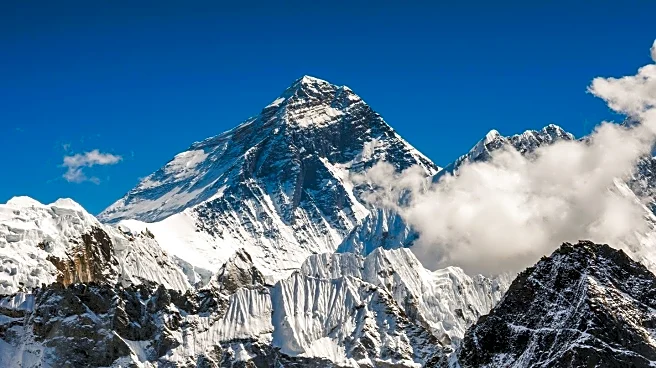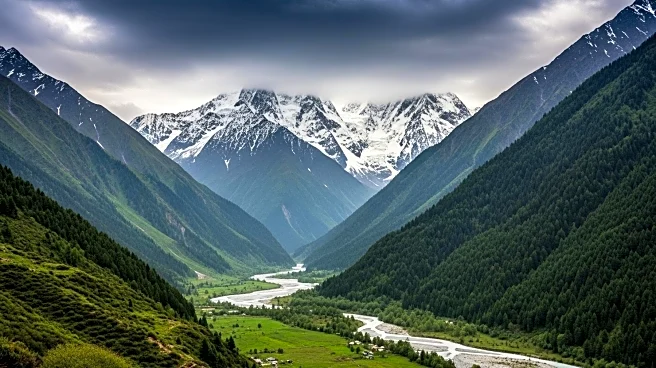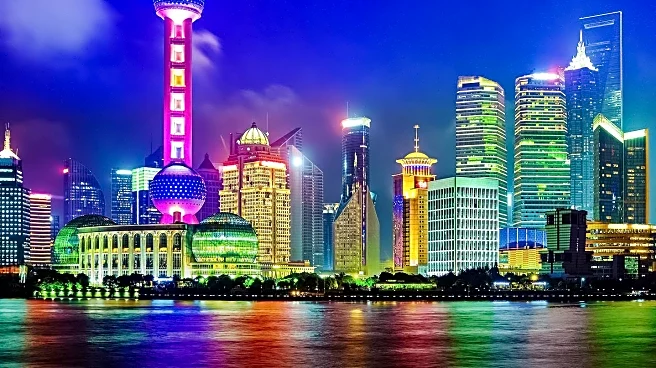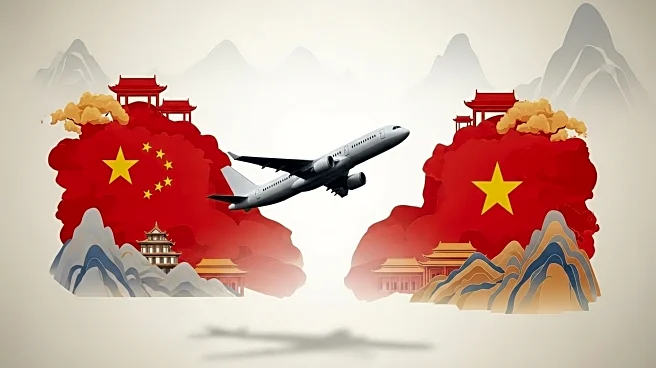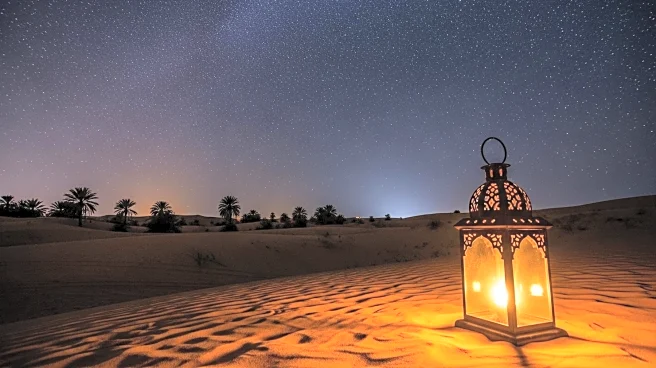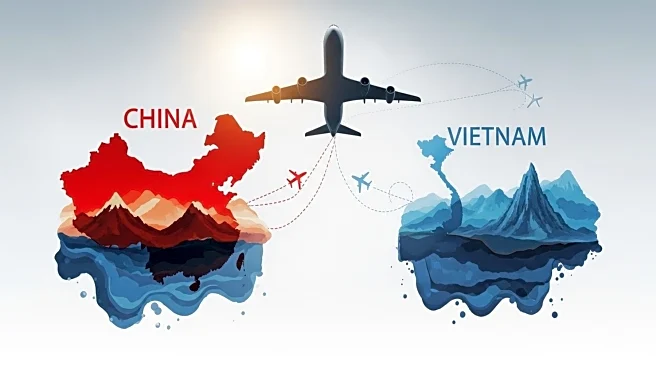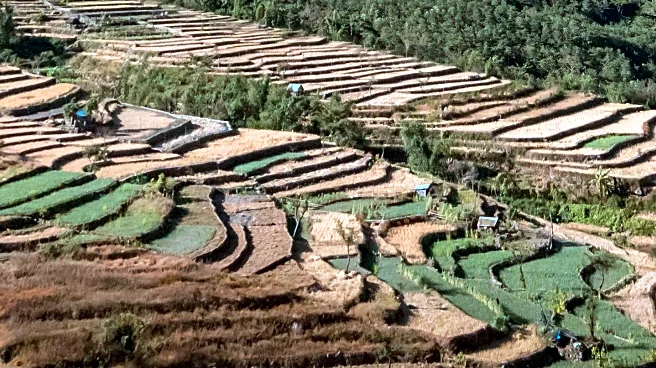What's Happening?
A surprise blizzard on Mount Everest stranded hundreds of trekkers and tourists, prompting a large-scale rescue operation by Tibetan firefighters and local guides. The unexpected snowstorm hit the eastern side of the mountain during an eight-day holiday in China, catching many holidaymakers off guard. The snow was reported to be more than three feet deep in some areas, creating hazardous conditions for the hikers. In total, about 580 hikers, along with over 300 guides, yak herders, and other workers, were rescued and brought to safety. The incident underscores the risks associated with climbing the world's highest peak, especially as the number of adventurers and tourists continues to grow.
Why It's Important?
The rescue operation highlights the increasing popularity of outdoor sports among China's middle class, driven by a desire for better health and social connections. The incident also raises concerns about the preparedness of tourists who venture into challenging environments like Mount Everest. The growing number of visitors to the region has led to increased business opportunities for local guides and residents, but also poses safety challenges. The temporary closure of the eastern part of Mount Everest following the storm may impact local tourism and businesses reliant on the influx of visitors.
What's Next?
The eastern part of Mount Everest remains temporarily closed to the public, which may affect future trekking plans and local tourism. Authorities and local guides may need to reassess safety protocols and preparedness measures to prevent similar incidents. The event could lead to increased scrutiny on the safety of trekking routes and the adequacy of equipment used by tourists. Local businesses may also need to adapt to changing visitor patterns and potential regulatory changes.
Beyond the Headlines
The incident may prompt discussions on the ethical responsibilities of tour operators and guides in ensuring the safety of their clients. It also highlights the cultural significance of Mount Everest as a symbol of adventure and challenge, attracting people from around the world despite the inherent risks. The event could lead to long-term shifts in how outdoor adventures are marketed and managed, with a greater emphasis on safety and preparedness.
